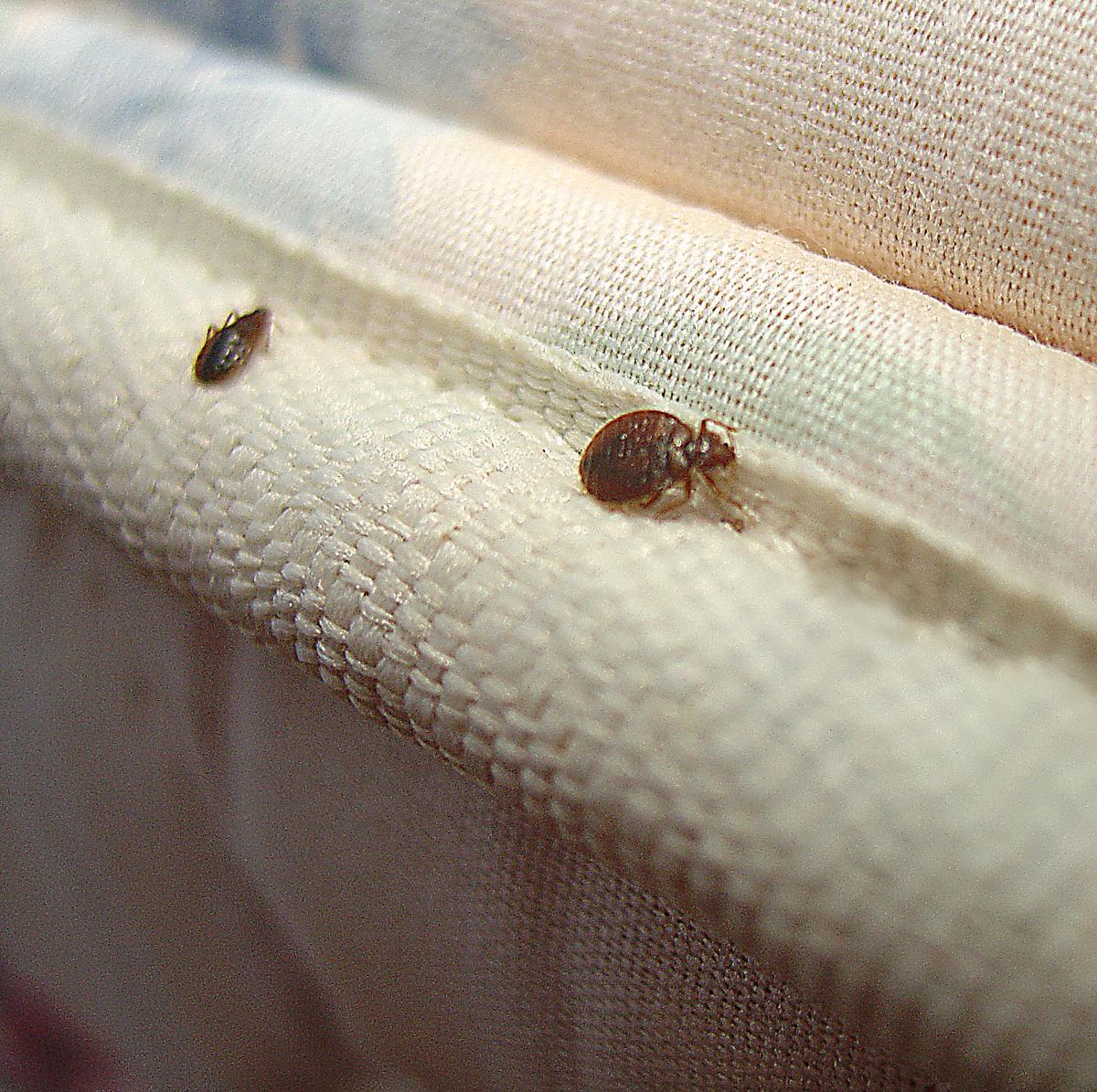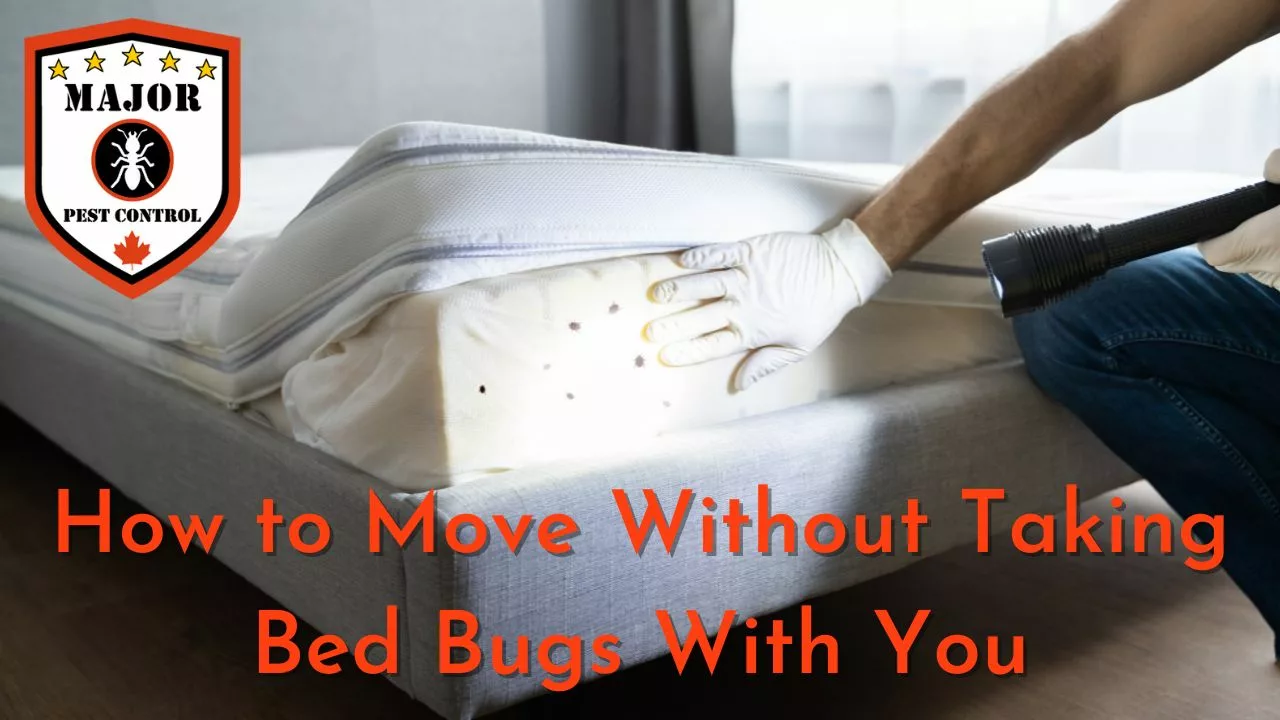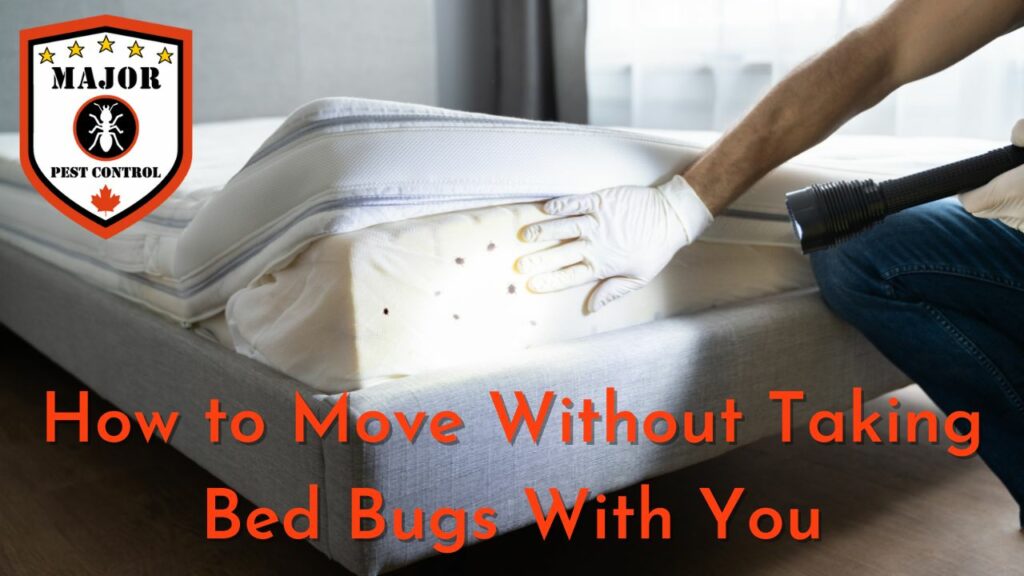To move without taking bed bugs with you, inspect all your belongings, wash and dry your clothes and bedding on high heat, and use protective covers on mattresses and furniture. When moving, carefully pack items in sealed plastic bags and inspect your new home for signs of bed bugs.
Once you arrive, carefully unpack and inspect all your items before fully settling in. Moving to a new home is an exciting time, but the last thing you want to bring along are unwanted bed bugs. These persistent pests can cling onto your belongings and travel with you to your new place, causing a headache when trying to get rid of them.
However, there are several steps you can take to minimize the risk of bringing bed bugs with you when moving. By following these precautions, you can ensure a bed bug-free transition to your new home.
Prepare Your Belongings
To prevent bed bugs from infiltrating your new home during a move, take proactive measures. Thoroughly examine and clean all belongings, particularly furniture and fabric items. Seal them in plastic covers or encasements to keep bed bugs at bay. Vacuum and wash everything before packing and seal boxes tightly to reduce the risk of infestation.
Prepare Your BelongingsWash And Dry Clothes
Before moving, wash and dry all clothes on the highest heat setting to kill any bed bugs.
Ensure clothes are completely dry before packing to prevent mold or mildew.
Seal And Pack Items
Seal items in plastic bags or containers to avoid bed bugs from spreading.
Use tape to secure the seams and gaps of boxes or bags.
Vacuum And Steam Clean
Vacuum furniture and cracks thoroughly, then steam clean to eliminate any remaining bed bugs.
Repeat this process multiple times to ensure thorough cleaning.
Treat Your Furniture
When moving to a new place, it’s essential to Treat Your Furniture to prevent bed bugs from hitching a ride. Taking proactive steps to ensure your furniture is bed bug-free can save you from a lot of hassle later on.
Inspect For Bed Bugs
Before you move, carefully Inspect all furniture for bed bugs and their eggs. Look for small reddish-brown bugs or black spots that indicate their presence.
Use Heat Treatment
Heat Treatment is an effective way to kill bed bugs. You can use a steamer or a heating device to treat your furniture, ensuring all bugs are eliminated.
Apply Insecticide
Consider Applying Insecticide to your furniture as a preventive measure. Choose an insecticide specifically designed to target bed bugs and follow the instructions carefully.
Disassemble And Clean Your Bed
Moving to a new home is exciting, but the last thing you want to bring with you are bed bugs. These tiny pests can quickly infest your new space, causing discomfort and frustration. To ensure a bed bug-free move, it’s essential to disassemble and thoroughly clean your bed. By following these steps, you can leave those unwanted hitchhikers behind and enjoy a fresh start in your new home.
Remove Bedding
The first step in cleaning your bed is to remove all bedding, including sheets, pillowcases, and blankets. Be sure to gather them in a secure bag or container to prevent any potential bed bugs from escaping and spreading to other areas. To be extra cautious, seal the bag tightly for disposal or consider washing them on high heat to kill any lurking bed bugs.
Take Apart The Frame
In order to thoroughly clean your bed, it’s important to disassemble the frame. This provides access to all the nooks and crannies where bed bugs may hide. Carefully unscrew or detach any parts, such as headboards, footboards, or side rails. Ensure to place the screws, nuts, and bolts in a labeled bag or container for easy reassembly later on.
Clean Mattress And Box Spring
Now that your bed frame is disassembled, it’s time to clean the mattress and box spring. Start by vacuuming all surfaces, paying close attention to seams and crevices where bed bugs commonly hide. After vacuuming, use a stiff brush to scrub the mattress and box spring to dislodge any remaining bed bugs or eggs. Once the cleaning is complete, consider encasing your mattress and box spring in bed bug-proof covers to provide additional protection.
By diligently disassembling and cleaning your bed, you significantly reduce the risk of bringing bed bugs with you during your move. Taking these preventive measures will help you start fresh in your new home, ensuring a peaceful and pest-free sleep.

Credit: www.terminix.com
Handle Electronics And Appliances
When moving to a new home, it’s essential to pay close attention to your electronics and appliances to prevent the spread of bed bugs. Here are key steps to ensure a bed bug-free move for your electronics and appliances:
Inspect And Clean Electronics
Before packing your electronics, inspect them carefully for any signs of bed bugs. Use a flashlight to check the small crevices and seams for any insects or eggs. Once inspected, wipe down the surfaces with a damp cloth and a mild cleaning solution to remove any potential bed bugs or their eggs. Allow the electronics to dry completely before packing them for the move.
Check Appliances For Infestations
For appliances such as refrigerators, washing machines, and dishwashers, it’s crucial to examine the exteriors and interiors for any bed bug activity. Don’t forget to check the electrical cords, vents, and underneath and behind the appliances. If bed bugs are found, use a vacuum to remove them and their eggs. Consider contacting a pest control professional for severe infestations to ensure complete eradication.
Seal And Pack Correctly
After ensuring that your electronics and appliances are free from bed bugs, it’s important to seal and pack them correctly. Place smaller electronics in sealed plastic bags before placing them in boxes to prevent any potential infestations during the move. For larger appliances, carefully wrap them in plastic and secure the wrapping with tape. This will help to ensure that no bed bugs hitch a ride to your new home.
Dispose Of Infested Items
When moving to a new place, disposing of infested items is crucial in preventing bed bugs from coming along with you. Identifying infested items and using different disposal methods are essential steps in ensuring a bed bug-free move.
Identify Infested Items
Before disposing of any items, it’s important to identify which ones are infested with bed bugs. Visually inspect your furniture, bedding, and other belongings for any signs of bed bugs, such as live bugs, cast skins, eggs, or reddish-brown fecal spots.
Use Different Disposal Methods
Once you’ve identified the infested items, consider the most appropriate disposal method. This may include sealing the infested items in plastic bags and throwing them away in outdoor garbage bins, or arranging for a professional pest control company to fumigate or heat treat the infested items.

Credit: www.orkin.com
Treat Your New Home
Moving into a new home? Learn how to avoid bringing bed bugs along in just a few simple steps. Keep your new space bug-free and enjoy a peaceful transition without any unwanted hitchhikers.
Inspect For Bed Bugs
Before settling into your new home, it’s crucial to inspect for any presence of bed bugs. These tiny pests can easily hide in cracks and crevices, making it important to thoroughly examine your new space. Begin by inspecting the mattress and box spring, checking the seams, tufts, and any labels. Look for dark spots or rust-colored stains, as these could indicate bed bug activity. Don’t forget to inspect the surrounding areas, such as furniture, curtains, and baseboards. If you spot any signs of bed bugs, it’s essential to address the issue immediately.Seal Entry Points
To prevent bed bugs from finding their way into your new home, it’s essential to seal all potential entry points. Start by examining windows and doors for any gaps or cracks that could serve as a gateway for these insects. Use caulk or weatherstripping to seal these openings, ensuring a tight seal. Additionally, check for any holes or openings around pipes, cables, and vents. Don’t overlook the importance of sealing cracks in your floors and walls, as bed bugs can easily crawl through even the tiniest of spaces. By taking these preventative measures, you can minimize the risk of bed bug infestations.Apply Preventive Measures
Preventing bed bugs is better than dealing with an infestation. Once you’ve inspected and sealed your new home, it’s important to apply preventive measures to keep these pests at bay. Start by using mattress encasements and box spring covers designed specifically for bed bugs. These encasements act as a protective barrier, preventing bed bugs from making a home in your sleeping area. Additionally, consider using bed bug interceptors under your bed legs. These devices trap any bed bugs trying to climb onto your bed, effectively limiting their access. Finally, maintain cleanliness and reduce clutter in your new home, as bed bugs thrive in untidy environments. By proactively implementing these preventive measures, you can enjoy a bed bug-free home.Overall, ensuring a bed bug-free move entails treating your new home with appropriate care. By inspecting for bed bugs, sealing entry points, and applying preventive measures, you can minimize the risk of bringing these unwanted pests into your new living space. Take the necessary precautions to make your move a smooth and bed bug-free transition.Consider Professional Assistance
When preparing for a move, seeking the help of professionals can ensure a seamless transition without the risk of bringing bed bugs along.
Hire A Pest Control Expert
Engage a reputable pest control professional to inspect your current residence for bed bugs before moving.
- Professional treatment can help eradicate existing infestations.
- They can implement preventative measures to avoid transferring bed bugs to your new home.
Inform Landlords Or Neighbors
Notify your landlord or neighbors of any bed bug issues promptly, so necessary precautions can be taken to prevent the spread.
- By alerting others, you can collectively address the problem before it escalates.
- Cooperation is crucial in ensuring a bed bug-free environment for all parties involved.
Take Precautions During Travel
When traveling, it’s crucial to take precautions to avoid bed bug infestations during your trip. By following simple steps, you can protect yourself from bringing these unwanted pests back home with you.
Inspect Hotel Rooms
Before settling in, inspect hotel rooms thoroughly for any signs of bed bugs. Check mattress seams, furniture, and behind headboards for small reddish-brown insects or dark spots.
Protect Your Luggage
Keep your luggage elevated and away from walls or furniture in hotel rooms to prevent bed bugs from crawling in. Consider using bed bug-proof luggage encasements for an additional layer of protection.
Wash And Dry Before Returning Home
Upon returning from your trip, wash and dry all clothing on high heat to kill any potential bed bugs that may have hitched a ride. Vacuum and inspect your luggage thoroughly before storing it away.

Credit: majorpestcontrolcalgary.ca
Frequently Asked Questions For How To Move Without Taking Bed Bugs With You
How Do Bed Bugs Spread During A Move?
Bed bugs can spread through infested furniture, luggage, and clothing during a move. They can also hide in cracks and crevices. To prevent the spread, carefully inspect belongings and use protective covers. Vacuum and steam clean items thoroughly, and consider professional pest control services.
Can Bed Bugs Survive A Move?
Yes, bed bugs can survive a move by hiding in furniture, clothing, and other items. Due to their resilience, it’s crucial to take proactive steps to prevent their spread. Inspect and treat belongings, use protective covers, and consider seeking professional pest control services to address any infestations.
How Can I Protect My New Home From Bed Bugs?
To protect your new home from bed bugs, inspect all furniture and belongings before moving them in. Use protective covers for mattresses and furniture, vacuum and steam clean items thoroughly, and consider professional pest control services to ensure a bed bug-free environment.
What Are The Signs Of A Bed Bug Infestation?
Signs of a bed bug infestation include small red bites on the skin, bloodstains on sheets, and a musty odor in the room. Additionally, you may spot live bed bugs, shed skins, or dark fecal spots on mattresses and furniture.
If you suspect an infestation, take immediate action.
Conclusion
Moving to a new home can be an exciting time, but the last thing you want to bring with you are bed bugs. By following the steps outlined in this blog post, you can ensure a bed bug-free move. From inspecting your belongings to treating your furniture, taking these precautions will help you start your new chapter without the presence of these pesky pests.
Say goodbye to bed bugs and hello to a fresh start in your new home.
Related posts:

I’m MD Tanvir, and I bring years of expertise gained from working closely with pest control companies to the forefront. My journey in the industry has inspired me to launch Bug Battler, a platform aimed at equipping people with the know-how to combat pests autonomously. Through Bug Battler, I aim to empower individuals with practical insights to tackle pest infestations effectively.

